Kenneth L. Gentry Jr.'s Blog, page 47
April 9, 2021
IS REVELATION PAST? (4)
PMW 2021-029 by Kenneth L. Gentry, Jr.
I am now drawing to the conclusion of my four-part series on the reasoning behind a preteristic understanding of Revelation. Many deem the great judgments and upheaval of Revelation as undermining the glorious postmillennial hope. This is mistaken in that the bulk of Revelation was fulfilled in the first century. As we have been seeing.
I am now ready for my concluding article with the: Thematic Indicators
As mentioned in previous articles, the theme of divine judgment on Israel fits perfectly with the Olivet Discourse. Virtually all commentators note the remarkable parallels between Matthew 24 and Revelation 6. These parallels are sufficient alone to suggest the same theme, but other correspondences exist.
In Matthew 23 Christ scathingly denounces Israel’s leadership as he approaches the dramatic conclusion of his earthly ministry. He notes that Israel’s present failure is not an isolated event, but the culmination of a lengthy historical pattern — as do Stephen (Ac 7) and Paul (1Th 2:14-16). He concludes his rebuke with a prophecy that Israel will “fill up” (Mt 23:32) her guilt in “this generation” (23:36) when she “persecutes” those Jesus is “sending” (23:34; cp. Ac 8:1; 1Th 2:14-16).
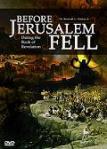
Before Jerusalem Fell Lecture DVD by Ken Gentry
A summary of the evidence for Revelation’s early date. Helpful, succinct introduction to Revelation’s pre-AD 70 composition.
See more study materials at: www.KennethGentry.com
Thereupon, Jesus weeps over Jerusalem (23:37), declares her temple “desolate” (23:38), and ceremoniously departs from it (24:1a). When the disciples express confusion at his rejection of the temple (24:1b), He prophesies its utter destruction (24:2). This specific prophecy prompts the disciples’s questions about the time of this judgment (24:3). Jesus responds with his Olivet Discourse. The first portion of the discourse (24:2-34) focuses particularly on the temple (Mt 24:2) in Judea (v. 16) during that “this generation” (v. 34),1 just as John’s Revelation focuses on the Jews (1:7; 2:9; 3:9) and the temple (11:1-8) in the near future (1:1, 3; 22:6, 10). As noted above, both John and Jesus merge Zechariah 12:10 and Daniel 7:13 in this context of approaching judgment upon Israel (Mt 24:30; Rev 1:7). Both prophecies warn of A.D. 70.
Furthermore, several other NT passages warn of the Jerusalem’s judgment in A.D. 70:
“Truly I say to you, there are some of those who are standing here who shall not taste death until they see the kingdom of God after it has come with power” (Mk 9:1).
“The Jews, who both killed the Lord Jesus and the prophets, and drove us out. They are not pleasing to God, but hostile to all men, hindering us from speaking to the Gentiles that they might be saved; with the result that they always fill up the measure of their sins. But wrath has come upon them to the utmost” (1Th 2:15-16).
“Not forsaking our own assembling together, as is the habit of some, but encouraging one another; and all the more, as you see the day drawing near” (Heb 10:25).
“You too be patient; strengthen your hearts, for the coming of the Lord is at hand” (Jas 5:8-9).
“The end of all things is at hand; therefore, be of sound judgment and sober spirit for the purpose of prayer” (1Pe 4:7).

This all fits well with an AD 70 focus. This all supports the preterist analysis of Revelation.
Keys to the Book of Revelation (DVDs by Ken Gentry)
Provides the necessary keys for opening Revelation to a deeper and clearer understanding.
See more study materials at: www.KennethGentry.com
April 6, 2021
IS REVELATION PAST? (3)
PMW 2021-028 by Kenneth L. Gentry, Jr.
This is my third installment on the question of the evidence that Revelation was fulfilled in the first century. As surprising as this conclusion is for the modern evangelical, the proof is in Revelation itself. In this article I will consider the Historical Indicators for preterism.
I agree with the Puritan Talmudic scholar, John Lightfoot: Revelation appears to prophesy Christ’s judgment upon the Jews in A.D. 70. John’s opening statement of purpose (1:7), the seven letters (2:9; 3:9), and the body of Revelation (4-19; e.g., 7:1-8; 11:1-8) all reflect this truth.
Just after mentioning the nearness of the events (1:1, 3) and just before alluding to the dire circumstances of his original audience (1:9), verse 7 warns: “Behold he comes with the clouds, and will see him every eye and those who him pierced, and will wail over him all the tribes of the land. Yes, amen” (Alfred Marshall, The Interlinear Greek-English NT; cp. Robert Young, Literal Translation). Though this sounds like a Second Advent reference, the following evidence points to A.D. 70.
Coming with the Clouds
Cloud-coming language often speaks of historical divine judgments. For instance, Isaiah 19:1a warns: “An oracle concerning Egypt: See, the LORD rides on a swift cloud and is coming to Egypt” (cp. Ps 18:7-15; 104:3; Joel 2:1,2; Na 1:2ff.; Zep 1:14,15). This speaks of the Assyrian king Esarhaddon conquering Egypt in 671 B.C. As Young notes: “The scene does not necessarily suggest that the Lord comes from the Temple at Jerusalem nor from heaven, but merely that He comes as a judge” (Isaiah, 2:14), i.e., providentially, not personally.
Interestingly, John follows Jesus in merging Zechariah 12:10 and Daniel 7:13. Like John, Jesus mentions the “coming on the clouds” (cp. Mt 24:29-30) against Israel (Mt 23:36-24:2, 16). And like John, Jesus ties the events to the near future: “all these things shall come upon this generation” (Mt 24:34).
Those Who Crucified Christ
Christ’s judgment-coming is against: “they who pierced him.” Jesus blames the Jews for his death: “Christ began to show His disciples that He must go to Jerusalem, and suffer many things from the elders and chief priests and scribes, and be killed” (Mt 16:21; cp. Mt 20:18-19; 21:33-43; Mk 8:31; Lk 9:22). The apostles also lay the covenantal blame for his crucifixion upon Israel: “Then know this, you and all the people of Israel: It is by the name of Jesus Christ of Nazareth, whom you crucified” (Ac 4:10a; cp. Jn 19:5-15; Ac 2:22, 23, 36; 3:14, 15; 4:8-10; 5:30; 10:39; 1Th 2:14-16). Revelation 1:7 must refer to the first century in that those who “pierced him” are now long since deceased.
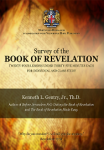
Survey of the Book of Revelation
(DVDs by Ken Gentry) Twenty-four careful, down-to-earth lectures provide a basic introduction to and survey of the entire Book of Revelation. Professionally produced lectures of 30-35 minutes length.
See more study materials at: www.KennethGentry.com
The Tribes of the Land
This judgment brings mourning upon “all the tribes of the land” (1:7; Marshall’s Interlinear). These “tribes” (phyle) must be the tribes of Israel (cf. Mt 19:28; Lk 22:30). TDNT notes that the Septuagint “with few exceptions . . . has phyle, so that this becomes a fixed term for the tribal system of Israel” (9:246). Revelation clearly mentions those Jews who were saved out from “the tribes” of Israel (7:4-8; cp. 21:12); and John sets these over against other “tribes and peoples” beyond Israel (7:9; cp. 11:9).
What is more, John associates these “tribes” with “the land” (tes ges), the well-known Promised Land (cp. Lk 21:23). As Edersheim observes: “Palestine was to the Rabbis simply ‘the land,’ all other countries being summed up under the designation of outside the land.”1 Indeed, the OT mentions “the tribes” and “the land” together in numerous instances (e.g., Ge 49:16; Nu 26:55; Jos 14:1; 19:51; Eze 45:8; 48:29).
In the seven letters John specifically mentions the defection of the Jews from God. He even informs the churches that Christ will vindicate them by judging the Jews:
• “I know your tribulation and your poverty (but you are rich), and the blasphemy by those who say they are Jews and are not, but are a synagogue of Satan.(2:9)
• Behold, I will cause those of the synagogue of Satan, who say that they are Jews, and are not, but lie, behold, I will make them to come and bow down at your feet, and to know that I have loved you.” (3:9)2
Surely this humiliation of the Jews was in the lifetime of the recipients of Revelation — in A.D. 70 when the Jews were “cast out” (Mt 8:10-12) and the kingdom was given to the gentiles (Mt 21:40-43).
The Temple and Holy City
Revelation expressly mentions the coming destruction of the temple, and with language drawn from the Olivet Discourse.
“Jerusalem will be trampled on by the Gentiles until the times of the Gentiles are fulfilled” (Lk 21:24b).
“But exclude the outer court; do not measure it, because it has been given to the Gentiles. They will trample on the holy city for 42 months” (Rev 11:2).
Note that both of these passages inform us that the “holy city/Jerusalem” will be “trampled” by the “gentiles.” And both appear in prophecies confined to the short term (1:1, 3; 22:6, 10; Lk 21:31-32). Evidently, these texts are referring to the same events, with John deriving his cue from Christ’s discourse about A.D. 70 (Lk 21:6-7).

Blessed Is He Who Reads: A Primer on the Book of Revelation By Larry E. Ball
A basic survey of Revelation from an orthodox, evangelical, and Reformed preterist perspective. Ball understands John to be focusing on the destruction of Jerusalem and the temple in AD 70. Insightful. Easy to read.
For more Christian studies see: www.KennethGentry.com
Interestingly, the time of the formal imperial engagement of the Jewish War until the destruction of the temple was forty-two months. According to Bruce, after the initial Jewish uprising in A.D. 66, Vespasian “arrived the following spring [A.D. 67] to take charge of operations. . . . Titus began the siege of Jerusalem in April, 70. The defenders held out desperately for five months, but by the end of August, the Temple area was occupied and the holy house burned down, and by the end of September all resistance in the city had come to an end.”3 From Spring A.D. 67 to September A.D. 70, covers a period right at forty-two months. This is a remarkable correspondence which fits relevantly with all the other data.
And now: three down, one more to go! My next article will conclude this series.
April 2, 2021
IS REVELATION PAST? (2)
PMW 2021-027 by Kenneth L. Gentry, Jr.
In my last article I introduced the first of four arguments for approaching Revelation from the preterist perspective. The first article focused on the temporal indicators that John places in Revelation. Lexically, it is clear that he expected the events to “soon” take place (Rev 1:1) because “the time is near” (Rev 1:3).
But after placing that argument as the foundation stone for the preterist house, we need to notice that there are other indications as well. In this installment I will consider Audience Indicators. Revelation did not fall down out of heaven as book of concepts. It was given in a real, historical context. It is what scholars call, “occasional literature.” That is, it was written regarding a certain occasion, which I believe to be the fall of Jerusalem and the temple in AD 70.
Technical studies on key issues in Revelation, including the seven-sealed scroll, the cast out temple, Jewish persecution of Christianity, the Babylonian Harlot, and more.
[image error]For more information and to order click here." data-medium-file="https://postmillennialismtoday.files...." data-large-file="https://postmillennialismtoday.files...." src="https://postmillennialismtoday.files...." alt="Navigating the Book of Revelation: Special Studies on Important Issues" class="wp-image-209" />Navigating the Book of Revelation (by Ken Gentry)
Technical studies on key issues in Revelation, including the seven-sealed scroll, the cast out temple, Jewish persecution of Christianity, the Babylonian Harlot, and more.
See more study materials at: www.KennethGentry.com
First, John writes to seven historical churches. Immediately after twice declaring the nearness of the events (1:1, 3) we read: “John to the seven churches that are in Asia” (1:4a). In 1:11 and 2:1–3:22 he specifically names the churches. John informs these first century churches of events ‘soon’ (1:1) to come to pass because “the time is near” (1:3). How could they have understood John to really mean that either 2,000 years would elapse before the events broke out or that they would drag on and repeat themselves for 2000 years?
Second, studies by William Ramsey and Colin Hermer show how intimately Revelation addresses those specific churches regarding their histories, settings, and struggles. The seven letters are occasional letters designed specifically for their concerns.
Third, within these letters we also find temporal qualifiers suggesting those churches would experience the shock waves from the events of Revelation (2:5; 2:16; 3:11; 22:12, 20). One of them was “about to” be tried by Satan (2:10; cp. 1:19 Gk.). To another Christ is “coming quickly” in judgment (2:16; cp. 1:1). To still another He promises: “I also will keep you from the hour of testing, that hour which is about to come upon the whole world [oikumene]” (3:10; cp. 1:19 Gk.). Indeed, a church must “hold fast” for awhile in that Christ’s judgment-coming will trans transpire “quickly” (3:11; cp. 1:1).
Perilous Times: A Study in Eschatological Evil (by Ken Gentry)
Technical studies on Daniel’s Seventy Weeks, the great tribulation, Paul’s Man of Sin, and John’s Revelation.
See more study materials at: www.KennethGentry.com
Fourth, John wrote Revelation while these churches were enduring stressful times: “I, John, your brother and fellow partaker in the tribulation and kingdom and perseverance which are in Jesus” (1:9a). Revelation promises quickly to vindicate the martyrs who cry: “How long?” (6:9). The were told “they should rest for a little while longer” (6:10-11; cp. Lk 18:7-8). In fact, later in Revelation, we learn “there shall be delay no longer” (10:6). Yet, on the non-preterist interpretation, their vindication was not after “a little while,” and the events await an enormous delay.
And there is more! But you will have to wait for the next article in this series.
March 30, 2021
IS REVELATION PAST? (1)
Due to the widespread influence of dispensationalism, the preterist approach to Revelation shocks many Christians. So it is important to carefully introduce them to the exegetical rationale for this approach.
I believe we should present a four-fold exegetical justification for preterism in Revelation. These justifications are rooted in interpretive demands derived from the text itself, not from theological predispositions (e.g., anti-premillennialism) or from traditional predilections (e.g., Moses Stuart, Milton Terry).
So I will begin with in this first article with: Temporal Indicators.
The leading preterist evidence derives from John’s temporal delimitations, which he emphasizes by strategic placement, didactic assertion, frequent repetition, and careful variation.
He strategically places them twice in his introduction (1:1, 3) and five times in his conclusion (22:6, 7, 10, 12, 20), thereby bracketing the highly wrought drama within (4:1–22:6). In these didactic passages John employs two terms demanding preterism: tachos / tachu (1:1, cp. 22:7, 12, 20) and eggus (1:3; cp. 22:10). For example:
The Revelation of Jesus Christ, which God gave Him to show to His bond-servants, the things which must shortly [tachos] take place. . . . Blessed is he who reads and those who hear the words of the prophecy, and heed the things which are written in it; for the time is near [eggus]. (1:1a, 3)
John immediately impresses upon his reader the nearness of his prophetic events.
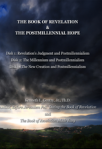
The Book of Revelation and Postmillennialism (Lectures by Ken Gentry)
In the first of these three 50-minute lectures Gentry explains Revelation’s judgments to show they do not contradict postmillennialism. In the next two lectures he shows how the Millennium and the New Creation themes strongly support the gospel victory hope found in postmillennialism.
See more study materials at: www.KennethGentry.com
Lexicographers agree on the temporal significance of tachos in Revelation: The Baur-Arndt-Gingrich-Danker Lexicon (BAGD) notes that en tachei means: “soon, in a short time Lk 18:8; Ro 16:20; 1 Ti 3:14 v.1; Rv 1:1; 22:6; 1 Cl 65:1; shortly Ac 25:4.” Thayer offers the following range of meanings: “quickness, speed and quickly, shortly, speedily, soon,” listing Revelation 1:1 and 22:6 with the “speedily, soon” entries. Abbott-Smith concurs: 1:1 and 22:6 mean “quickly, speedily, soon.”
Greek text editors F. J. A. Hort, Kurt Aland, and Howard Marshall agree. Hort translates it “shortly, soon.” Aland comments: “In the original text, the Greek work used is tachu, and this does not mean ‘soon,’ in the sense of ‘sometime,’ but rather ‘now,’ immediately.” Marshall cites Revelation 1:1 and 22:6 as evidence that the normal use of the phrase en tachei “suggest[s] that soon is the meaning.”
In fact, all English versions translate it either as: “soon” (NIV, RSV, Beck, NRSV, NAB, CEV), “shortly” (KJV, ASV, Weymouth, NEB, NASB, NKJV), or “very soon” (Moffatt, Phillips, Williams, TEV). Tachos obviously indicates temporal brevity elsewhere (e.g., Lk 18:8; Ac 12:7; Ro 16:20). The same is true of its related form tachus (Mt 5:25; Mk 9:39; Lk 15:22; cp. Rev 2:16; 3:11; 11:14; 22:7, 12, 20).
This evidence is reinforced by John’s linking tachos with eggus in the same contexts, as if to provide a two-fold witness (1:1, 3; 22:6, 10). BAGD provides the following entry for eggus: “of time near a. of the future: kairos Mt 26:18; Rv 1:3; 22:10.” The other lexicons cited above concur. TDNT notes that the term means “temporally near at hand” and observes that “like the Synpt., Rev. uses eggus only as a term for the near coming of the kingdom of God. Thus we have ho gar kairos eggus in 1:3; cf. 22:10″ (3:330, 331). The various samples of eggus in the NT all agree: some relating spatial, others temporal nearness (Mt 24:32, 33; 26:18; 13:28, 29; Lk 19:11; 21:30, 31). And again, all translations of Revelation agree; all versions cited above have either “near” or “at hand.”
Perhaps the most interesting proof of the meaning of these terms is the various competing, innovative, counter-intuitive attempts to get around their obvious significance! Indeed, if these terms do not express temporal nearness, what terms could John have used to do so? I am firmly convinced John prophesies the fast approaching destruction of the Temple in A.D. 70.
But there is more. I will engage the second line of evidence in my next article.

The Early Date of Revelation and the End Times: An Amillennial Partial Preterist Perspective
By Robert Hillegonds
This book presents a strong, contemporary case in support of the early dating of Revelation. He builds on Before Jerusalem Fell and brings additional arguments to bear.
See more study materials at: www.KennethGentry.com
March 26, 2021
UNDERSTANDING POSTMILLENNIALISM
PMW 2021-025 by Kenneth L. Gentry, Jr.
Postmillennialism is perhaps the easiest eschatological position to misunderstand in our era and therefore inadvertently to misrepresent. Consequently, we must remind our brothers in the debate of postmillennialism’s actual claims. In a Westminster Theological Journal article I wrote a few years ago, I caution non-postmillennialists regarding three faulty assumptions that they must avoid when responding to our eschatological system. And though few competent theologians would intentionally apply these conditions to postmillennialism, I fear that these sometimes lurk unrecognized in the subconscious.
First, postmillennialism neither teaches nor implies universalism. Postmillennialists do not argue that at some point in temporal history each and every individual then living will be saved. Consequently, even at the very height of the postmillennial advance, unbelievers will remain among us, though in a minority status—some as false converts to the faith, others as openly unrepentant resisters. Jesus clearly teaches this in his Parable of the Tares among the Wheat (Matt 13:30), just before declaring the enormous victory of the faith in all the world (Matt 13:31-33). This is a part of the “mysteries of the kingdom” (Matt 13:11): the glorious kingdom of God does not overwhelm the world catastrophically (but grows gradually like a mustard plant and penetrates little-by-little as does leaven) and it will not conquer the world absolutely (but grows to a majoritarian dominance like wheat in the field).
The Truth about Postmillennialism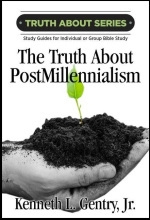 By Ken Gentry
By Ken Gentry
A group Bible study guide for explaining the optimistic prophetic hope for this world to be accomplished before Christ’s Second Coming. Establishes the postmillennial system in both the Old and New Testaments. Touches on key eschatological issues, such as creation, covenant, interpretive methodolgy, the great tribulation, the Book of Revelation, the Jewish Temple, and more. It presents and answers the leading objections to postmillennialism.Twelve chapters are ideal for one quarter of Sunday School.
See more study materials at: www.KennethGentry.com
Second, postmillennialism neither teaches nor implies perfectionism. Postmillennialists do not argue that at some point in temporal history Christians then living will be perfected. Despite the worldwide victory of the Christian faith, Christians will remain sinners—sanctified sinners, of course, but redeemed vessels of mercy suffering the complications of indwelling sin. Just as no current evangelical church is perfect, neither will an evangelical world be perfect. But if the majority of the human race were conducting themselves as the average church-going, born-again Christian of today, the world would certainly be a different and much better place—despite this lack of perfection.
Third, postmillennialism neither teaches nor implies satisfactionism. Postmillennialists do not argue that Christ’s people should prefer temporal, earthly conquest through gospel dominion over eternal, heavenly victory in consummational glory. Any believer with even a modicum of spiritual sanctification and biblical understanding must recognize the surpassing glory that awaits him in the resurrected estate. Then—and only then—will we see God face-to-face, experience the transformation of our bodies from mortality to immortality, enjoy freedom from temptation and sin, live forever in blessed circumstances, and be reunited with our saved loved ones. The glory of Christian dominion in the earth pales in comparison to the glory of resurrection majesty in the new earth.
In addition to these three clarifications, postmillennialists endure dissenters reminding us of present world conditions as evidence against our expectations. Consequently, we must insist that our eschatological system be properly defined: nowhere in the definition of postmillennialism do we declare that by the year 2016 we will witness the glorious blessings of worldwide gospel conquest. Until the moment the Lord returns postmillennialism cannot be disproved by evidences from cultural decline and social chaos in the world. Who knows how long God will take to effect the glorious transformation? Just as Christians should not doubt the second coming of Christ because it has not occurred yet (2 Pet 3:4), neither should evangelicals discount the cultural dominion of Christ because it is not full now. All our system requires is that the world be Christianized before the Lord returns—and we do not know when that will be (Matt 24:36; Acts 1:7).
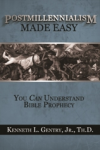
Postmillennialism Made Easy (by Ken Gentry)
Basic introduction to postmillennialism. Presents the essence of the postmillennial argument and answers the leading objections. And all in a succinct, introductory fashion.
See more study materials at: www.KennethGentry.com
March 23, 2021
EDITING MILTON TERRY’S COMMENTARY
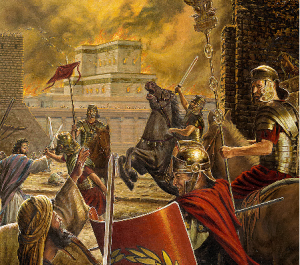 PMW 2021-024 by Kenneth L. Gentry, Jr.
PMW 2021-024 by Kenneth L. Gentry, Jr.
In my previous three postings I have been noting the significance of Milton Terry’s commentary as I plan to bring it back into print. Thankfully, Biblical Apocalyptics has remained in print over the years and has included “The Apocalypse of John” as a major portion of it. But the published versions have been created by merely scanning the original text, then printing it “as is.” No attempt at resetting the type was engaged. Thus, the quality of reproduction was quite low.
Though we are not changing any of Terry’s positions, we are editing it for a modern readership. In our newly typeset version of Terry’s The Apocalypse of John the reader will find the following improvements.

Blessed Is He Who Reads: A Primer on the Book of Revelation
By Larry E. Ball
A basic survey of Revelation from an orthodox, evangelical, and Reformed preterist perspective. Ball understands John to be focusing on the destruction of Jerusalem and the temple in AD 70. Insightful. Easy to read.
For more Christian studies see: www.KennethGentry.com
We are using a modern type-font: AmerigoBT. This makes the text cleaner, being aesthetically more pleasing in appearance as well as easier on the eyes. This is especially an advance over the older, scanned versions of his commentary.
Long paragraphs and sentences have been broken down into smaller sizes according to modern style. When sentences were broken into more comfortable sizes, we sometimes had to add a word or two of transition to make it flow smoothly. We also inserted serial (or Oxford) commas for greater clarity. In addition, we abbreviated parenthetical notes to lighten up the style. This included abbreviating parenthetical verse references (e.g., Matthew to Matt.), using the standard abbreviation “cp.” instead of either the bulkier “comp.” or the full word “compare,” and so forth.
We have also modernized some of the nineteenth-century language, Thus, we replaced some words and phrases with their modern counterparts. This included replacing the following words: “wont to be,” “ye,” “builded,” “must needs.” “wroth,” “sware,” “anon,” “sitteth,” “like unto,” and so forth. However, we did not change his direct quotations from Scripture, which also involved some antiquated language. For often his argument required a direct citation of the verse. According to Terry’s statement in Biblical Apocalyptics (Preface, p. 7), the Bible version he used was “in the main” that of the Anglo-American Revised Version of 1881.
The original commentary appeared as a single chapter of 228 pages in one large book. Thus, it was necessary to break down the material into several chapters to present it as a free-standing book. In the process we have unified the layout style which sometimes shifted in the original.
Antiquated Roman numerals have been replaced with Arabic numbers throughout. We have employed modern style for ancient references such as to Josephus, Tacitus, Suetonius, etc. For instance, we changed Josephus’ “Wars, bk. iv, 4, 5” to “Wars 4:4:5.

The Book of Revelation Made Easy
(by Ken Gentry)
Helpful introduction to Revelation presenting keys for interpreting. Also provides studies of basic issues in Revelation’s story-line.|
See more study materials at: www.KennethGentry.com
To make the commentary more accessible to a broader audience, we added English transliterations to the Greek and Hebrew characters found in the original.
We have made it easier to search for a commentary note, not only by breaking up Terry’s long paragraphs. But by bolding the Revelation quotations being commented on and by adding the Scripture addresses to each newly introduced quote (which was necessary since we broke down the larger paragraphs).
Hopefully our labor will not have been in vain and Terry will be more easily received by a new generation. We trust that you will find Terry as interesting and helpful as we have. He is certainly not inspired, but he is inspiring. He will challenge your thinking.
Coming soon (probably in April, 2021):

March 19, 2021
SIGNIFICANCE OF TERRY’S REVELATION COMMENTARY
 PMW 2021-023 by Kenneth L. Gentry, Jr.
PMW 2021-023 by Kenneth L. Gentry, Jr.
As noted in the two previous postings, Jay Rogers and I will soon be re-publishing Milton S. Terry’s commentary on Revelation. As Christians who are deeply interested in Revelation, it is with great pleasure that we will soon be releasing it as a stand-along commentary. Since its initial composition in 1898, it has always appeared as a part of his larger volume dealing the leading apocalyptic passages in Scripture: Biblical Apocaclyptics: A Study of the Most Notable Revelations of God and of Christ in the Canonical Scriptures.. The commentary was the largest chapter in that work, consuming almost fifty percent of the book: 228 pages of its 512 pages.
Terry’s The Apocalypse of John is deeply-exegetical, tightly-argued, and clearly-presented. It has been in print for many years due to its strength and clarity. He makes a powerful case for the preterist approach to Revelation. And in doing so, he presents some important angles that are often overlooked even by preterist interpreters of the book. It is time for Terry’s book to gain a contemporary hearing in the ongoing Revelation debates.
Some of the distinctive elements in Terry’s approach to Revelation are the following.
First, his commentary is a distinctively preterist work. Preterism holds that the great majority of the prophesied events in Revelation were future when John wrote them, but now are in our past. The word “preterist,” in fact, means “passed by.” Most modern-day interpreters view Revelation as futurist in orientation. But John was writing to a first-century church which desperately needed Revelation’s message about events “which must soon take place” (Rev. 1:1; 22:6).
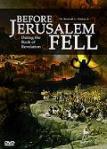
Before Jerusalem Fell Lecture
DVD by Ken Gentry
A summary of the evidence for Revelation’s early date. Helpful, succinct introduction to Revelation’s pre-AD 70 composition.
See more study materials at: www.KennethGentry.com
Second, he carefully presents the case for the early dating of Revelation. That is, he shows that it was written prior to the AD 70 destruction of the temple by the Romans. This view was the dominant understanding in the 1800s and the opening decades of the 1900s. Though it lost its dominance in the mid-twentieth century, nevertheless in the past thirty years it has started to press its way back into scholarly discussions.
Third, he recognizes that Revelation’s theme verse in Revelation 1:7 speaks of Christ’s judgment-coming against Israel. This is against the view of most commentators today — including preterist ones — who view it as referring to the Second Coming at the end of history. But Terry presents some strong evidence for position, which deserves a hearing today.
Fourth, he highlights the important fact that the phrase “the earth [Gk., tes ges]” may and should often be translated “the land,” i.e., the Promised Land. This observation throws a flood of light on the whole theme of Revelation and highlights its strong Israel-judgment focus. Most preterist commentators hold that John is focusing almost equally on two first-century enemies of God’s people, Jerusalem and Rome.
Fifth, he presents a strong case for the beast of Revelation being the Roman emperor Nero. Nero was the first imperial persecutor of the early church. He was encouraged to attack the church partly due to the instigation of the Jews, who vehemently opposed Christianity.
Sixth, he argues that the Babylonian harlot is an image of corrupt, first-century Jerusalem. He does this rather than applying it to ancient Rome or some distantly future phenomenon. By doing this, he is showing how the theme verse applies to the Jews who rejected Jesus as their Messiah. He believes John picked up the harlot imagery from Old Testament denunciations of Israel’s idolatrous sins.
Seventh, he is postmillennial in his eschatology. Like preterism, postmillennialism was once dominant in the past (1600s-early 1900s). Postmillennialism and the preterist approach to Revelation fit together nicely, thus encouraging the simultaneous rising of the fortunes of both.
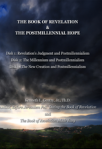 The Book of Revelation and Postmillennialism (Lectures by Ken Gentry)
The Book of Revelation and Postmillennialism (Lectures by Ken Gentry)
In the first of these three 50-minute lectures Gentry explains Revelation’s judgments to show they do not contradict postmillennialism. In the next two lectures he shows how the Millennium and the New Creation themes strongly support the gospel victory hope found in postmillennialism.
See more study materials at: www.KennethGentry.com
Eighth, he recognizes that though Revelation is greatly concerned with first-century events, it is not focused exclusively on those events. He points out that in the last chapters of Revelation John glances to the distant future. This shows the long-term consequences of the first-century events prophesied in Revelation.
Terry presents a powerful preterist interpretation, with which we agree. Though we do not agree with every position that he presents, we will not “correct” him with our own views. So the reader will have the exegetical arguments as Terry originally presented them. Our views can be found elsewhere.
Soon coming:

March 16, 2021
INTRODUCING MILTON TERRY (2)
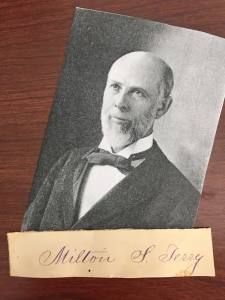 PMW 2021-022 by Kenneth L. Gentry, Jr.
PMW 2021-022 by Kenneth L. Gentry, Jr.
This is the second in a two-part series introducing the life and ministry of Milton S. Terry. Terry was a scholarly advocate of both postmillennialism and preterism. Though I do not agree with all of his positions (even utterly rejecting some of them), his scholarly insights into Revelation are for the most part extremely helpful.
So let us continue, now by presenting his:
Published Writings
Terry was not only an accomplished scholar and an effective instructor, but he was also a prolific writer. He wrote extensively on apologetics, philosophy, comparative religions, and dogmatics. He wrote many articles for a variety of publications, including the Methodist Quarterly Review, The Old Testament Student, Sunday School Times, The Northwestern Christian Advocate, and others.
He is best remembered today, however, for his books, several of which are still in print. He wrote more than thirty books, among which are:
The Bible and Other Sacred Books : a Contribution to the Study of Apologetics and Comparative Theology (1890)
Biblical Apocalyptics: A Study of the Most Notable Revelations of God and of Christ in the Canonical Scriptures (1898)
Biblical Dogmatics: An Exposition of the Principal Doctrines of the Holy Scriptures (1907)
Biblical Hermeneutics: A Treatise on the Interpretation of the Old and New Testaments (1883)
Chronicles and the Mosaic Legislation (1888)
Commentaries on the Historical Books of the Old Testament (2 vols. 1873–75).
The Experience according to the Scriptures (1902)
Genesis and Exodus (1889)
Jesus Christ on Marriage and Divorce (1910)
Man’s Antiquity and Language (1881)
The Mediation of Jesus Christ: A Contribution to the Study of Biblical Dogmatics (1903)
Moses and the Prophets: An Essay toward a Fair and Useful Statement of Some of the Positions of Modern Biblical Criticism (1901)
The New and Living Way: An Orderly Arrangement and Exposition of the Doctrines of Christian Experience, according to the Scriptures (1902)
The New Apologetic: Five Lectures on True and False Methods of Meeting Modern Philosophical and Critical Attacks Upon the Christian Religion (1897)
Philosophical and Critical Attacks upon the Christian Religion (1897)
Primer on Christian Doctrine: In the Form of Questions and Answers (1906)
The Prophecies of Daniel Expounded (1893)
Rambles in the Old World (1894)
The Shinto Cult: A Christian Study of the Ancient Religion of Japan (1910)
The Sibylline Oracles Translated from the Greek into English Blank Verse (1899)
His most influential work in evangelical circles was his magisterial Biblical Hermeneutics (511 pages; 1883). This has been highly regarded by many scholars and even used in various evangelical colleges and seminaries over the years. Masters’ Seminary professor Robert L. Thomas notes that Biblical Hermeneutics “was viewed as the standard work on biblical hermeneutics for most of the twentieth century.” [1] Thomas goes on to state that Terry’s “basic principles of hermeneutics make the most sense” (p. 12). Terry’s classic work is still in print today.
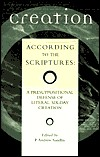 Creation according to the Scriptures
Creation according to the Scriptures
Ed. by P. Andrew Sandlin
This book is sub-titled: A Presuppositional Defense of Literal , Six-day Creation. It has chapters by R. J. Rushdoony, Andrew Sandlin, Kenneth Gentry, Cornelius Van Til, and others. It touches on historical, exegetical, theological, and philosophical implications of Six-day Creation.
See more study materials at: www.KennethGentry.com
The book that you are currently reading was lifted from Terry’s Biblical Apocalyptics, which was a large work of 512 pages. Biblical Apocalyptics, which is also still in print, was one volume of a three volume set. The first volume in this set was Biblical Hermeneutics (1883), which presented interpretive principles that are so important for his study Revelation, which you have before you in this special volume.
Biblical Apocalyptics was his second volume in this series (1898). Terry explains on p. 8 of that work: “The present treatise is the second in my plan, and, in nature and scope, is supplementary to the Hermeneutics, being an extended application and illustration of the principles of interpretation set forth therein.” The material contained in the present book that you have in your hands consumed half of the number of pages in its original source.
The third volume in the set was Biblical Dogmatics (604 pages; 1907). His goal in that volume was stated in advance in Biblical Apocalyptics as being “an essay toward a luminous, simple and systematic statement of the principal doctrines of the Old and New Testaments” (p. 8). Then in Biblical Dogmatics itself he stated that it is a “systematic exposition of religious truth” ( p. vi). Thus, he noted, “with [this] publication we complete the trilogy of our contributions to the study of biblical interpretation and doctrine which we began in 1883” (p. viii).
Death and Burial
In February 1914 Terry began an extended sabbatical during the second semester of the school year to gain some much needed rest from his many labors. He went with his wife to Los Angeles, California where he had many friends from among his former students and colleagues.
The Early Date of Revelation and the End Times: An Amillennial Partial Preterist Perspective
By Robert Hillegonds
This book presents a strong, contemporary case in support of the early dating of Revelation. He builds on Before Jerusalem Fell and brings additional arguments to bear.
See more study materials at: www.KennethGentry.com
On Sunday July 12, 1914 he preached at the Methodist Episcopal Church in the city of Covina, which is near Los Angeles. Later that afternoon he suddenly became quite ill. The next morning, July 13, he had a heart attack and died at the age of 74. Just two months before this (May 15), he and his wife had celebrated their fiftieth anniversary. [2]
His wife escorted his body back to Illinois. His funeral was held at Rose Hill Cemetery Chapel in Chicago, on Sunday, July 19, 1914. Rev. Dr. Charles M. Stuart, president of Garrett Biblical Institute conducted the service.
But “though he is dead, he still speaks” (Heb. 11:4) through his many published writings, which have gone in and out of print over the last century.
Notes
1. Robert L. Thomas, “The Principle of Single Meaning,” Master’s Seminary Journal (Spring 2001): 5 n1.
2. “Death of Dr. Milton S. Terry,” The Christian Advocate (July 23, 1914), 22.
March 12, 2021
INTRODUCING MILTON TERRY (1)
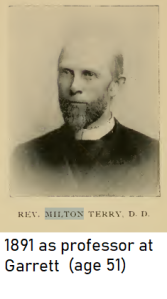 PMW 2021-021 by Kenneth L. Gentry, Jr.
PMW 2021-021 by Kenneth L. Gentry, Jr.
Milton Terry wrote an excellent preterist commentary on Revelation. It will be released by April, 2021, as a stand-alone commentary, having digitally extricated it from his larger work in which it was long embedded: Biblical Apocalyptics. In preparation for its release, I am providing this brief two-part biography of this remarkable scholar.
Family Background
Milton Spencer Terry was born on February 22, 1840 in the Town of Coeymans, New York. Coeymans was a small town in Albany County with a population of a little over 400 people. He died on July 13, 1914 in Los Angeles, a slightly larger town.
His father John Terry was born on March 13, 1786 in Swansea, R.I.. His mother Elizabeth McLoen (or: MacLaughlin) Terry was born on April 15, 1796 in New York City. At an early period in American history, the Terrys’ English ancestors arrived in America and settled in the New England colonies. In 1794, when John Terry was eight years, he moved with his father Philip Terry and his grandfather George Terry from Swansea to Coeymans.
Milton’s parents were farmers who enjoyed reasonable success in their work. Young Milton spent his youth on the farm but is reported to have always been studious, seeking ways to to “advance his mental instruction.” [1] He attended district (public) schools as a child in Coeymans.
During an old-fashioned prayer meeting at the home of an old saint, Milton had a remarkable conversion experience which greatly impacted his life. According to a memorial published in the Official Journal of the New York Conference (1915): “his heart, like Wesley’s, was strangely, divinely warmed, and the ecstasy of that hour he never forgot.”
Thine Is the Kingdom
(ed. by Ken Gentry)
Contributors lay the scriptural foundation for a biblically-based, hope-filled postmillennial eschatology, while showing what it means to be postmillennial in the real world.
See more study materials at: www.KennethGentry.com
On May 15, 1864, twenty-four year old Milton Terry married Frances Orline Athchinson (b. Oct. 1, 1841) in Delhi, N.Y. They had two children, Minnie Ruth Terry (b. March 29, 1870) and Arthur Guy Terry (May 10, 1878).
Both of Milton Terry’s children were well-educated. His daughter Minnie was a Phi Beta Kappa at Northwestern University, where she received the A. B. in 1891 and the A.M (in Latin) in 1894. After graduating, she studied in Europe in 1894–95. Then for many years she taught French at Evanston, Illinois, high school. Arthur graduated from Northwestern with a Ph.M. in History in 1902, where he became Professor of History. He also was a Fellow in History at the University of Pennsylvania (1902). Like his father, he was a noted scholar and a published author. For example, he edited the multi-volume series History Stories of Other Lands: The Modern World (1915). In this series he wrote the second volume, which was well-received.
Formal Education
Milton studied briefly at Troy University, but in 1859 he graduated from the New York Conference Seminary in Charlotteville, N.Y. Later he also graduated from Yale Divinity School (1862). He had the D.D. degree conferred on him in 1879 by Wesleyan University in Middletown, Connecticut. He studied for a year in Berlin in 1887. Then in 1895 at the age of fifty-five, he was awarded the honorary LL.D. from Northwestern University in Evanston, Illinois.
He did well in all of his formal academic studies. But he especially excelled in Greek and Latin, then later in Hebrew.
According to a memorial statement in the Official Journal of the New York Conference (1915), Milton Terry was a man of “keen intellect and warm heart.” He was loved and respected at Northwestern University and in the surrounding area, for he “made for himself a warm place in the hearts of all Evanstonians.” [2] He was deemed “very genial and approachable” being “well beloved by the larger number of students who had sat under his instruction, by his colleagues on the Garrett teaching force, and by a host of friends throughout the [Methodist Episcopal] Church.” [3]
Ecclesiastical Ministry
Terry was ordained to pastoral ministry in the New York Conference of the Methodist Episcopalian Church. He held various ministerial positions for over twenty years (1863 to 1884). For nineteen years of those years he held pastoral charges in the state of New York.
His first preaching was for one year in a Hancock, N. Y. where he filled the pulpit of his recently deceased brother. Following this he engaged in full-time pastoring in New York state in the cities of Hamden, Delhi, Peekskill, Poughkeepsi, Kingston, and New York City. Historical notices on his preaching ministry show he was an effective communicator. He was declared to be “a clear and forceful preacher, very efficient instructor, and profound biblical scholar.”
While at the St. Paul’s church in Peekskill, N.Y., he began rapidly advancing in his ministerial standing in the conference. During his final four years of ecclesiastical ministry, he was the Presiding Elder of the New District of the New York Conference. In 1880 he was elected as a delegate of the New York Conference to the General Conference of the Methodist Episcopalian Church. He left the pastoral ministry in 1884 when he was elected to the professorship at Garrett Biblical Institute in Evanston, Ill.
Three Views on the Millennium and Beyond
(ed. by Darrell Bock)
Presents three views on the millennium: progressive dispensationalist, amillennialist, and reconstructionist postmillennialist viewpoints. Includes separate responses to each view. Ken Gentry provides the postmillennial contribution.
See more study materials at: www.KennethGentry.com
Academic Positions
In 1884, Terry was elected to the chair of Old Testament Language and Literature at Garrett Biblical Institute, Evanston, Illinois. He served there for thirty years in various positions between 1884 until his death in 1914. His special interests were in apologetics, comparative religion, and Old Testament.
In 1871 he was elected to the American Oriental Society, and in 1883 to the Society of Biblical Literature and Exegesis. He also was a member of the newly established Victoria Institute (London).
Later in 1887 he attended lectures at the University of Berlin, where he picked up Higher Critical concepts that influenced his thinking. Despite his accepting much of what Higher Critics taught regarding the writing of the Scriptures, he personally maintained a strong commitment to the supernaturalism of the historic Christian faith. [4] Thus, he opens Biblical Apocalyptics with these words: “That God has at many times and in many ways revealed himself to men is a doctrine fundamental to the Christian faith, and the canonical writings of the Old and New Testaments are believed to be a truthful presentation of such divine revelations.” [5]
After serving as Professor of Old Testament Language and Literature at Garrett Biblical Institute, he transferred to the Chair of Christian Doctrine in 1897. He served in this position until his death in 1914.
(To be continued)
Notes
1. Robert D. Sheppard, History of Northwestern University and Evanston (Chicago: Munsell, 1906), 545.
2. Frances E. Willard, A Classic Town: The Story of Evanston (Chicago: Woman’s Temperance Publishing Association, 1891), 278.
3. “The Death of Dr. Terry,” Western Christian Advocate (July 22, 1914 [80]: 13.
4. He writes in this regard: “For the sake of any who may feel regret that I concede so much to the findings of modern higher criticism I take this opportunity to say that I have in some instances allowed the claims of a radical criticism, which I am personally far from accepting as established, for the very purpose of showing that the great religious lessons of the scripture in question are not affected by critical opinions of the possible ‘source,’ and date, and authorship, and redaction.” Terry, Biblical Apocalyptics: A Study of the Most Notable Revelations of God and of Christ (rep.: Grand Rapids: Baker, 1988 [1898]), p. 8.
5. Terry, Biblical Apocalyptics, 3.
March 9, 2021
THE GREAT COMMISSION: A POSTMILLENNIAL ENTERPRISE (4)
 PMW 2021-020 by Kenneth L. Gentry, Jr.
PMW 2021-020 by Kenneth L. Gentry, Jr.
The Great Commission truly sets forth a Great commission. It institutes a program of immense proportions, a program calling for world transformation. Christ s the discipling of all nations in all things He has taught. He lays upon His people the task of bringing all men and their cultural endeavors under the redemptive Lordship of the Triune God.
How can such a program be accomplished? Surely He did not expect it to occur over night. Millions of evangelicals teach that Christ’s coming to end history as we know it has been imminent ever since He ascended into heaven. They live by the standard of pop-theologian Hal Lindsey: “We should be living like people who don’t expect to be a round much longer.” Who would set themselves to the long, expensive, difficult, time consuming task of world transformation if he believed the world as he knows it could end at any moment?
All the Days
But the language of the Great Commission strongly implies the historical long run. Christ says literally: “I will be with you all the days.” He did not say, “Expect me to return to cease your labors at any moment.” Just as the preceding “all’s” are to be understood in their fullness, so is this statement of the duration of His presence with His people to ensure the accomplishment of the task.

Greatness of the Great Commission (by Ken Gentry)
An insightful analysis of the full implications of the great commission. Impacts postmillennialism as well as the whole Christian worldview.
See more study materials at: www.KennethGentry.com
How extensive is Christ’s authority? It encompasses “all authority in heaven and on earth.”
How broad is the ministry to apply? It is to involve the discipling of “all the nations.” How thorough is the training to be? In “all things whatsoever” He taught. How long is the time He left for His disciples? He did not say, “Perhaps I’ll be back tomorrow.” Rather He speaks of the ever lengthening vistas of the future, declaring: “I will be with you through all the great number of days stretching out before you.”
Had He not taught His disciples to expect a long delay before His return? In the Parable of the Virgins He warned that “while the bridegroom was delayed, they all slumbered and slept” (Matt. 25:5). In the Parable of the Talents He warned: “After a long time the lord of those servants came and settled accounts with them” (Matt. 25:19).
Christians, we must train our children and those who are converted to Christ through our evangelism to dig in for the long haul. It is in this century we have seen what secularists call “the triumph of humanism.” It is also in this century that we have seen the triumph of the dispensationalist imminency doctrine, that has effectively removed an earlier widespread Christian cultural endeavor. Too many Christians have withdrawn from culture to await Christ’s any moment appearing. I think the triumph of dispensationalism is partly related to the triumph of humanism.
The task before us is enormous. But the equipment is sufficient: The One with all authority s us. He has given us all the days. And He promises us: “I will be with you.” In the Greek this statement has great emphasis: “I, I will be with you.”
Lord of the Saved
(by Ken Gentry)
A critique of easy believism and affirmation of Lordship salvation. Shows the necessity of true, repentant faith to salvation.
See more study materials at: www.KennethGentry.com
We may confidently expect success in the long run. Christ, Christ is with us. The Old Testament prophets, the New Testament Apostles, and the Lord of glory all look to glorious days in earth’s future in which all nations “from the river to the ends of the earth” will come and bow down before Him. And He uses His people to get the task accomplished under His administration.
The Great Commission ends appropriately in the Majority Text: “Amen.” Amen means simply, “So be it.”
Kenneth L. Gentry Jr.'s Blog
- Kenneth L. Gentry Jr.'s profile
- 85 followers



